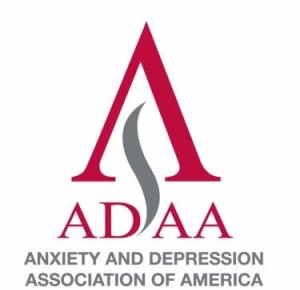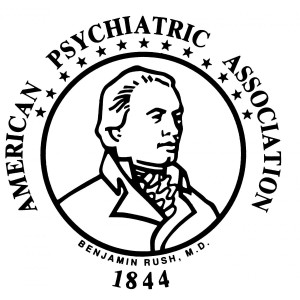Description Post-Traumatic Stress Disorder (PTSD) is a mental disorder characterized by disturbing symptoms that interfere with daily functioning (see below), following either witnessing or experiencing a traumatic life-threatening event. Trauma itself is experienced as terrifying. Common reactions to a traumatic event are to think that one’s life or others’ lives are in danger, to experience heightened fear or terror, or to feel out of control. The causes of trauma are variable, but all result from being exposed to either witnessing or experiencing directly an extreme stressor. Such stressors include assault from another person or persons, sexual assault, a motor vehicle accident, domestic abuse, a natural disaster such as a major flood, earthquake, or tornado, combat exposure, or terrorism, to name just a few. However, most of us experience trauma at some point in our lives, and yet the number who go on to develop symptoms sufficiently severe to lead to a diagnosis of PTSD is relatively rare, with an estimated lifetime occurrence of PTSD of 7-8% of the general population, although the rates in the military are much higher (about 11-20% in soldiers returning from Iraq and Afghanistan – see PTSD and Military; see also Helpful Resources). Statistics also show that 10% of women experience PTSD at some point in their lifetime compared to 5% of men. Women are also more likely to experience sexual assault and child sexual abuse, whereas men are more likely to experience accidents, combat, physical assault, natural disaster, or are witness to a death or injury. Thus many people experience traumatic events and may experience difficulties coping for a short period, but it is time limited and they don’t have PTSD. With time, their symptoms generally improve and then disappear. It is only, however, when symptoms get worse, or last for months or even years, and interfere with daily functioning, that the diagnosis of PTSD is given. Thus even though PTSD is a relatively rare disorder, there are many more individuals who experience a trauma over the course of their life-time who do not develop PTSD. Why some individuals go on to develop PTSD while others do not is an important question that needs to be addressed. There may be predisposing factors such as early previous trauma in childhood, lack of social support, severity of the trauma, or a genetic predisposition for developing PTSD following trauma. All of these contributory factors need to be explored and understood in PTSD so that we can develop more specific, targeted treatments and so that we may intervene early in the course of the illness. Symptoms and Heterogeneity PTSD symptoms may start very quickly following a traumatic event, or they might not appear for years after the event. PTSD is thus a heterogeneous disorder in terms of both the occurrence following a trauma and with respect to the symptoms experienced. The symptoms observed in PTSD include what are referred to as intrusive memories or reliving of the experience, avoidance of anything that reminds the person of the trauma, negative changes in thinking or mood that are a result of the trauma and which interfere with daily functioning, and changes in the person’s emotional reactions to everyday events. Other symptoms include hyperarousal in situations that may lead to being easily startled, experiencing problems with sleeping, and not being able to concentrate. Additional symptoms include nightmares or even experiencing what are called “flashbacks,” where the event is re-experienced as if it were happening all over again. There are also sometimes negative thoughts and feelings that interfere with everyday functioning, such as self-blame, depression, and thoughts of hurting oneself. Those suffering from PTSD also experience feeling unsafe or always in danger, feeling anxious or jittery, or even irritated. Also reported are feelings of panic that something terrible is about to happen. There are also sometimes feelings of being emotionally cut off from others, or feeling numb or losing interest in things that used to give pleasure. Additionally, social problems are often observed, including problems relating to others and getting along with spouse, family, and/or friends. It is, however, not just the symptoms of PTSD that are problematic. There are also issues of how people react to the symptoms that can further disrupt their lives. For example, a person may avoid places or things that remind them of what happened, or may drink or use drugs to try to numb their feelings, or may think of harming themselves or others, or pull back from others and become isolated. These symptoms may last for a short period of time, or they may become a way of life and interfere with daily functioning. There are thus a wide variety of symptoms and not all occur in the same person. Further, symptoms can change over time in even the same person. PTSD and Military To date, about 11 to 20% of the soldiers returning from the Iraq and Afghanistan are diagnosed with PTSD. This is higher than the rates of PTSD observed in the general population. Soldiers experience combat and are exposed to life-threatening situations that include being shot at, seeing a fellow soldier being shot, witnessing death, and observing explosions that result in the death and maiming of fellow soldiers. The possibility of experiencing several such traumas increase the likelihood of developing PTSD. Additionally, combat soldiers may also experience mild traumatic brain injury, in addition to PTSD, which complicates the clinical picture further, and may lead to more difficulties when the soldier returns home. There is increasing interest in preventing and treating PTSD in the military as is evident from the links included in Helpful Resources. Advanced Imaging Investigating the brain is important in PTSD as these investigations inform us about possible predisposing factors that are likely related to genetics and which lead to a higher risk for developing PTSD, as noted in the section on Genetics, where it is has been shown that having a smaller hippocampus, the area of the brain that is important for laying down memories, may lead to a higher risk for developing PTSD following trauma. There is also an interest in studying both fear and stress in order to understand better the etiology of PTSD. Here researchers have focused on the amygdala, which provides the emotional valence to memory and is also important in fear as well as other emotions. This small almond shaped structure in the brain is connected to the hippocampus and it is very active during fear responses, during the acquisition of fear, and during fear extinction – all-important areas to understand with respect to how we acquire fear, how we react to fear, and how we can dampen or extinguish our fear responses. Dampening one’s response to fear may also involve other parts of the brain such as the prefrontal cortex, a region that is involved in decision-making as well as in problem solving and in making judgments about events in the world. The medial portion of this part of the brain can dampen or suppress the response of the amygdala, thus serving to control fear responses. Research may thus lead to a further understanding of the fear and reward circuitry in the brain so that medications can be specifically targeted to dampen exaggerated fear responses following trauma, thereby breaking the intensity of the fear response in individuals who may go on to develop PTSD. Cognitive behavioral therapy and neuromodulatory responses might also be implemented in conjunction with imaging in order to determine the efficacy of such treatments and how they alter the brain. Genetics Research evidence clearly suggests a predisposition or susceptibility for developing PTSD that is hereditary in nature, with 30% of PTSD cases explained by genetics alone. For example, there is a study of twin pairs who were exposed to combat in Vietnam where some were monozygotic, or identical twins, and some were dizygotic or fraternal twins, the latter being no more close genetically than siblings. This study showed that the identical twin with PTSD had a co-twin who had an increased risk of PTSD compared to the non-identical twin pairs. There was also evidence that those identical twins with a smaller hippocampus were more likely to develop PTSD following a traumatic event. PTSD also shows symptom overlap and other similarities with other psychiatric disorders including panic and generalized anxiety disorders, as well as those with alcohol and nicotine abuse. Attention to other disorders that are similar is thus important for genetic studies. Additionally, there is a recent focus on genes that may play a role in creating “fear memories” and understanding how these fear memories are created might lead to new interventions for treatment. For example, one protein in the brain, stathmin, has been studied in mice where not having as much stathmin leads to less “freezing” in mice when they are put in fear conditions. Like many other psychiatric disorders, however, there are likely many genes that have very small effects in PTSD as well as a combination of early experience and genetics that help to determine who among us is most at risk for developing PTSD following a traumatic event. More work needs to be done and is currently ongoing (see Helpful Resources for further information). Today and the Future Today there is a great deal of interest in PTSD, particularly given the large number of Veterans returning from Afghanistan and Iraq who experience PTSD in addition to both PTSD and mild traumatic brain injury. It is also clear that not everyone who experiences trauma will develop PTSD and thus more research is needed to determine what makes some individuals more at risk for developing PTSD in response to experiencing traumatic events. Among the factors that likely increase the risk for developing PTSD are environmental factors such as experiencing childhood trauma or multiple traumas, mental illness, mental illness in a family member, poor social support, as well as personality and cognitive factors. Other likely influences include brain alterations such as having a smaller hippocampus that increases the risk of developing PTSD, as well as environmental and social factors that influence the early growth of the brain, which, taken together may set the stage for a person being more susceptible to responding to trauma with symptoms that do not abate over time. Further research may also lead to an understanding of the role of a combination of factors that predispose an individual to PTSD, including genetic, brain, and environmental factors. If we can begin to understand the contribution of these factors to this complex disorder we will be better positioned to predict those who are most likely to develop PTSD following trauma, and thereby be better positioned to begin to implement preventative measures that may involve more targeted medications, or neurofeedback techniques including brain stimulation techniques such as transcranial direct current stimulation (tDCS), which may dampen the fear response circuit in the brain. Developing more personalized medicine will also address the heterogeneity of this disorder and lead to more effective treatments. For more information about PTSD please see Helpful Resources. Helpful Resources. Below are several links that may be helpful concerning PTSD. We encourage you to follow up on the knowledge provided in these links. Post-Traumatic Stress Disorder (PTSD) is a mental disorder characterized by disturbing symptoms that interfere with daily functioning (see below), following either witnessing or experiencing a traumatic life-threatening event. Trauma itself is experienced as terrifying. Common reactions to a traumatic event are to think that one’s life or others’ lives are in danger, to experience heightened fear or terror, or to feel out of control. The causes of trauma are variable, but all result from being exposed to either witnessing or experiencing directly an extreme stressor. Such stressors include assault from another person or persons, sexual assault, a motor vehicle accident, domestic abuse, a natural disaster such as a major flood, earthquake, or tornado, combat exposure, or terrorism, to name just a few. However, most of us experience trauma at some point in our lives, and yet the number who go on to develop symptoms sufficiently severe to lead to a diagnosis of PTSD is relatively rare, with an estimated lifetime occurrence of PTSD of 7-8% of the general population, although the rates in the military are much higher (about 11-20% in soldiers returning from Iraq and Afghanistan – see PTSD and Military; see also Helpful Resources). Statistics also show that 10% of women experience PTSD at some point in their lifetime compared to 5% of men. Women are also more likely to experience sexual assault and child sexual abuse, whereas men are more likely to experience accidents, combat, physical assault, natural disaster, or are witness to a death or injury. Thus many people experience traumatic events and may experience difficulties coping for a short period, but it is time limited and they don’t have PTSD. With time, their symptoms generally improve and then disappear. It is only, however, when symptoms get worse, or last for months or even years, and interfere with daily functioning, that the diagnosis of PTSD is given. Thus even though PTSD is a relatively rare disorder, there are many more individuals who experience a trauma over the course of their life-time who do not develop PTSD. Why some individuals go on to develop PTSD while others do not is an important question that needs to be addressed. There may be predisposing factors such as early previous trauma in childhood, lack of social support, severity of the trauma, or a genetic predisposition for developing PTSD following trauma. All of these contributory factors need to be explored and understood in PTSD so that we can develop more specific, targeted treatments and so that we may intervene early in the course of the illness. PTSD symptoms may start very quickly following a traumatic event, or they might not appear for years after the event. PTSD is thus a heterogeneous disorder in terms of both the occurrence following a trauma and with respect to the symptoms experienced. The symptoms observed in PTSD include what are referred to as intrusive memories or reliving of the experience, avoidance of anything that reminds the person of the trauma, negative changes in thinking or mood that are a result of the trauma and which interfere with daily functioning, and changes in the person’s emotional reactions to everyday events. Other symptoms include hyperarousal in situations that may lead to being easily startled, experiencing problems with sleeping, and not being able to concentrate. Additional symptoms include nightmares or even experiencing what are called “flashbacks,” where the event is re-experienced as if it were happening all over again. There are also sometimes negative thoughts and feelings that interfere with everyday functioning, such as self-blame, depression, and thoughts of hurting oneself. Those suffering from PTSD also experience feeling unsafe or always in danger, feeling anxious or jittery, or even irritated. Also reported are feelings of panic that something terrible is about to happen. There are also sometimes feelings of being emotionally cut off from others, or feeling numb or losing interest in things that used to give pleasure. Additionally, social problems are often observed, including problems relating to others and getting along with spouse, family, and/or friends. It is, however, not just the symptoms of PTSD that are problematic. There are also issues of how people react to the symptoms that can further disrupt their lives. For example, a person may avoid places or things that remind them of what happened, or may drink or use drugs to try to numb their feelings, or may think of harming themselves or others, or pull back from others and become isolated. These symptoms may last for a short period of time, or they may become a way of life and interfere with daily functioning. There are thus a wide variety of symptoms and not all occur in the same person. Further, symptoms can change over time in even the same person. To date, about 11 to 20% of the soldiers returning from the Iraq and Afghanistan are diagnosed with PTSD. This is higher than the rates of PTSD observed in the general population. Soldiers experience combat and are exposed to life-threatening situations that include being shot at, seeing a fellow soldier being shot, witnessing death, and observing explosions that result in the death and maiming of fellow soldiers. The possibility of experiencing several such traumas increase the likelihood of developing PTSD. Additionally, combat soldiers may also experience mild traumatic brain injury, in addition to PTSD, which complicates the clinical picture further, and may lead to more difficulties when the soldier returns home. There is increasing interest in preventing and treating PTSD in the military as is evident from the links included in Helpful Resources. Investigating the brain is important in PTSD as these investigations inform us about possible predisposing factors that are likely related to genetics and which lead to a higher risk for developing PTSD, as noted in the section on Genetics, where it is has been shown that having a smaller hippocampus, the area of the brain that is important for laying down memories, may lead to a higher risk for developing PTSD following trauma. There is also an interest in studying both fear and stress in order to understand better the etiology of PTSD. Here researchers have focused on the amygdala, which provides the emotional valence to memory and is also important in fear as well as other emotions. This small almond shaped structure in the brain is connected to the hippocampus and it is very active during fear responses, during the acquisition of fear, and during fear extinction – all-important areas to understand with respect to how we acquire fear, how we react to fear, and how we can dampen or extinguish our fear responses. Dampening one’s response to fear may also involve other parts of the brain such as the prefrontal cortex, a region that is involved in decision-making as well as in problem solving and in making judgments about events in the world. The medial portion of this part of the brain can dampen or suppress the response of the amygdala, thus serving to control fear responses. Research may thus lead to a further understanding of the fear and reward circuitry in the brain so that medications can be specifically targeted to dampen exaggerated fear responses following trauma, thereby breaking the intensity of the fear response in individuals who may go on to develop PTSD. Cognitive behavioral therapy and neuromodulatory responses might also be implemented in conjunction with imaging in order to determine the efficacy of such treatments and how they alter the brain. Research evidence clearly suggests a predisposition or susceptibility for developing PTSD that is hereditary in nature, with 30% of PTSD cases explained by genetics alone. For example, there is a study of twin pairs who were exposed to combat in Vietnam where some were monozygotic, or identical twins, and some were dizygotic or fraternal twins, the latter being no more close genetically than siblings. This study showed that the identical twin with PTSD had a co-twin who had an increased risk of PTSD compared to the non-identical twin pairs. There was also evidence that those identical twins with a smaller hippocampus were more likely to develop PTSD following a traumatic event. PTSD also shows symptom overlap and other similarities with other psychiatric disorders including panic and generalized anxiety disorders, as well as those with alcohol and nicotine abuse. Attention to other disorders that are similar is thus important for genetic studies. Additionally, there is a recent focus on genes that may play a role in creating “fear memories” and understanding how these fear memories are created might lead to new interventions for treatment. For example, one protein in the brain, stathmin, has been studied in mice where not having as much stathmin leads to less “freezing” in mice when they are put in fear conditions. Like many other psychiatric disorders, however, there are likely many genes that have very small effects in PTSD as well as a combination of early experience and genetics that help to determine who among us is most at risk for developing PTSD following a traumatic event. More work needs to be done and is currently ongoing (see Helpful Resources for further information). Today there is a great deal of interest in PTSD, particularly given the large number of Veterans returning from Afghanistan and Iraq who experience PTSD in addition to both PTSD and mild traumatic brain injury. It is also clear that not everyone who experiences trauma will develop PTSD and thus more research is needed to determine what makes some individuals more at risk for developing PTSD in response to experiencing traumatic events. Among the factors that likely increase the risk for developing PTSD are environmental factors such as experiencing childhood trauma or multiple traumas, mental illness, mental illness in a family member, poor social support, as well as personality and cognitive factors. Other likely influences include brain alterations such as having a smaller hippocampus that increases the risk of developing PTSD, as well as environmental and social factors that influence the early growth of the brain, which, taken together may set the stage for a person being more susceptible to responding to trauma with symptoms that do not abate over time. Further research may also lead to an understanding of the role of a combination of factors that predispose an individual to PTSD, including genetic, brain, and environmental factors. If we can begin to understand the contribution of these factors to this complex disorder we will be better positioned to predict those who are most likely to develop PTSD following trauma, and thereby be better positioned to begin to implement preventative measures that may involve more targeted medications, or neurofeedback techniques including brain stimulation techniques such as transcranial direct current stimulation (tDCS), which may dampen the fear response circuit in the brain. Developing more personalized medicine will also address the heterogeneity of this disorder and lead to more effective treatments. For more information about PTSD please see Helpful Resources.













Comments are closed.